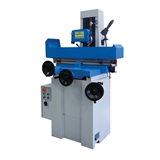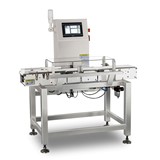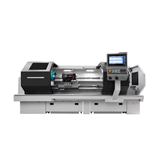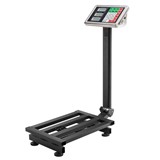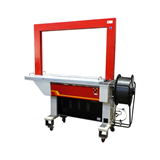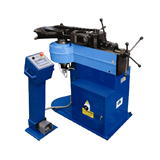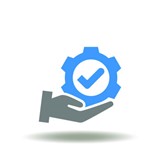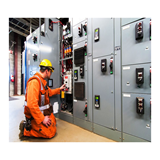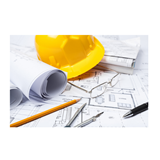Key Takeaways
- Your hurdle rate must increase. If the RBA cash rate rises by 3-4%, your project's minimum acceptable return ("hurdle rate") must increase accordingly. A project that looked profitable a year ago may no longer be viable against the new, higher cost of capital.
- Cash flow is more important than interest rates. While higher rates increase monthly repayments, a lack of working capital can kill a business.Prioritise financing structures that protect your cash flow, even if the interest rate is slightly higher.
- Don't ignore efficiency gains. Delaying a CapEx investment to avoid high interest rates can be a false economy. If new equipment reduces labour costs by 20% or cuts energy consumption, these savings often outweigh the increased financing costs. Calculate the full ROI, not just the repayment cost.
- Fixed vs. variable rates: Locking in a fixed rate offers certainty for budgeting but can be costly if rates fall unexpectedly. Variable rates offer flexibility but expose you to market volatility. Assess your risk tolerance carefully.
- Leverage tax incentives immediately. Use current tax incentives like temporary full expensing or the instant asset write-off to offset investment costs. A significant tax deduction in the first year can dramatically improve the project's net present value (NPV) and payback period.
Introduction: Navigating the new financial landscape for industrial investment
For Australian industrial businesses, the period of ultra-cheap money in 2021-2022 feels like a distant memory. As we navigate 2025, the landscape has fundamentally shifted. The Reserve Bank of Australia's (RBA) rapid tightening cycle has established a new baseline for interest rates, forcing businesses to re-evaluate every financial decision. This new reality directly collides with the immense pressure to invest in automation, efficiency, and sustainability to combat rising energy prices and persistent labour shortages.
A recent NAB Quarterly Business Survey indicated that while investment intentions remain positive, "cost of finance" has re-emerged as a major consideration for capital expenditure for the first time in nearly a decade. For a business owner considering the purchase of a new CNC machine, a production line upgrade, or heavy earthmoving equipment, the calculation is no longer simple. This article provides a practical guide for Australian industrial businesses on how to plan for significant CapEx in an environment of higher interest rates, ensuring your investments drive growth rather than financial strain.
Recalibrating your project hurdle rate
Before you can decide what to buy, you must reassess if you should buy. The most critical adjustment in a rising interest rate environment is to your hurdle rate. This is the minimum rate of return you demand from an investment before approving it. If your cost of capital (the interest rate on your loan) increases, your hurdle rate must increase with it.
- The old calculation: In 2022, you might have financed a machine at 3.5%. A project returning 8% looked attractive.
- The new calculation: In 2025, a similar loan might cost 7.5%. That same project returning 8% now offers a negligible risk premium. Your new hurdle rate might need to be 12% or higher to justify the investment.
This means you must re-prioritise your project pipeline. Projects that once seemed like "no-brainers" may need to be postponed, while projects delivering very high returns or critical efficiency gains move to the top of the list.
A realistic scenario: The automation upgrade
A small manufacturing business in Western Sydney planned an automation project in 2023 with an estimated cost of $300,000 and a calculated annual saving of $100,000 (a 3-year payback). When they sought finance in 2025, the increased interest cost reduced the net annual benefit to $80,000. The payback period extended to nearly four years. The project was still positive, but it was no longer as compelling, forcing management to compare it directly against a less expensive, lower-return software upgrade that offered a quicker payback.
Financing strategies for a higher-rate environment
When interest rates are high, a business's natural reaction is to borrow less. However, the more strategic approach is to borrow smarter. Protecting your working capital is paramount.
- Fixed vs. variable rates: Locking in a fixed rate provides certainty for budgeting, which is invaluable for managing tight margins. You know exactly what your repayments will be for the life of the loan. The downside? If the RBA cuts rates unexpectedly, you're stuck paying the higher rate. A variable rate offers flexibility but exposes your cash flow to market volatility. A common strategy for larger investments is to hedge your bets by fixing a portion of the loan and leaving the rest variable.
- Leasing as a cash flow alternative: An equipment lease or rental agreement can be an effective way to access new technology without a large upfront deposit. The periodic payments are treated as an operating expense (Opex) rather than a balance sheet liability (Capex), which can be appealing for some business structures. However, be aware that you don't build equity in the asset, and the total cost over the term may be higher than a standard loan.
- Increased lender scrutiny: Be prepared for lenders to look more closely at your cash flow projections. They will apply a higher "serviceability buffer" to ensure you can afford repayments even if rates rise further or your income dips. Having up-to-date financials and a clear business case for how the new equipment will boost revenue or cut costs is essential.
The new "repair vs. replace" calculation
In a high-rate environment, the knee-jerk reaction is often to extend the life of existing assets to avoid taking on new debt. The cost of financing a new $250,000 machine can seem daunting, making a $30,000 repair bill for an old one appear more palatable. This can be a dangerous trap.
You must calculate the total cost of ownership (TCO), not just the purchase price.
- Old equipment costs: Factor in rising maintenance expenses, higher energy consumption from inefficient motors, and downtime costs from more frequent breakdowns. A recent report on industrial efficiency noted that machinery over 10 years old can consume up to 25% more energy than its modern equivalent.
- New equipment benefits: New machinery often brings significant efficiency gains. It might require less labour to operate, produce less waste, or increase output speed. These savings directly improve your bottom line and can often completely offset the higher interest payments.
When you factor in efficiency gains, a new purchase often has a better ROI than continuing to patch up old, unreliable equipment.
Leveraging tax incentives to counter interest costs
Finally, a critical part of your CapEx planning in Australia involves leveraging government tax incentives. These incentives can significantly reduce the net cost of your investment and shorten the payback period, making a purchase far more attractive, especially when interest rates are high.
For example, the Temporary Full Expensing scheme (a form of instant asset write-off) allowed businesses to immediately deduct the full cost of eligible assets in the year of purchase. While schemes change, understanding the current tax environment is vital. A large upfront tax deduction can provide a significant cash flow boost that effectively counters the cost of interest for the first year. Always consult with your accountant to model the tax implications of any major purchase before you sign the finance contract.
Beyond the interest rate: Factoring in operational and technology risks
Focusing solely on interest rates is a common mistake when planning capital expenditure. For industrial equipment, operational risks like supply chain delays and technology obsolescence can ultimately have a far greater impact on your return on investment.
Supply chain and local support risk
A low interest rate means nothing for a machine that arrives 12 months late. The cost of waiting for equipment or overseas spare parts can quickly erase any savings from a marginally better finance deal. Prioritising a supplier with a robust Australian support network is critical risk mitigation.
Before buying, ask critical questions about operational resilience:
- Lead time: What is the realistic delivery and commissioning timeframe?
- Local support: Are critical spare parts and qualified technicians readily available in Australia to prevent extended downtime?
Technology obsolescence and efficiency gains
Delaying an upgrade to avoid higher interest rates might feel prudent, but it risks making your business uncompetitive. While your old machine may be paid off, new equipment often delivers efficiency gains that directly offset higher financing costs.
When calculating your ROI, factor in gains from:
- Reduced operating costs: Modern machinery often requires less labour intervention and consumes significantly less energy.
- Improved output and data: New technology can improve quality control, reduce waste, and provide data for preventative maintenance.
Conclusion
Navigating capital expenditure in a higher interest rate environment requires a shift in mindset. The "buy it now" mentality of the early 2020s must be replaced with a more rigorous, strategic approach. By reassessing your hurdle rates, structuring finance to protect cash flow, and analysing the full cost-benefit picture, including efficiency gains and tax incentives, you can continue to invest confidently. In this new normal, a well-planned CapEx strategy isn't just about acquiring assets; it's a critical tool for building a more resilient, efficient, and competitive industrial business.


